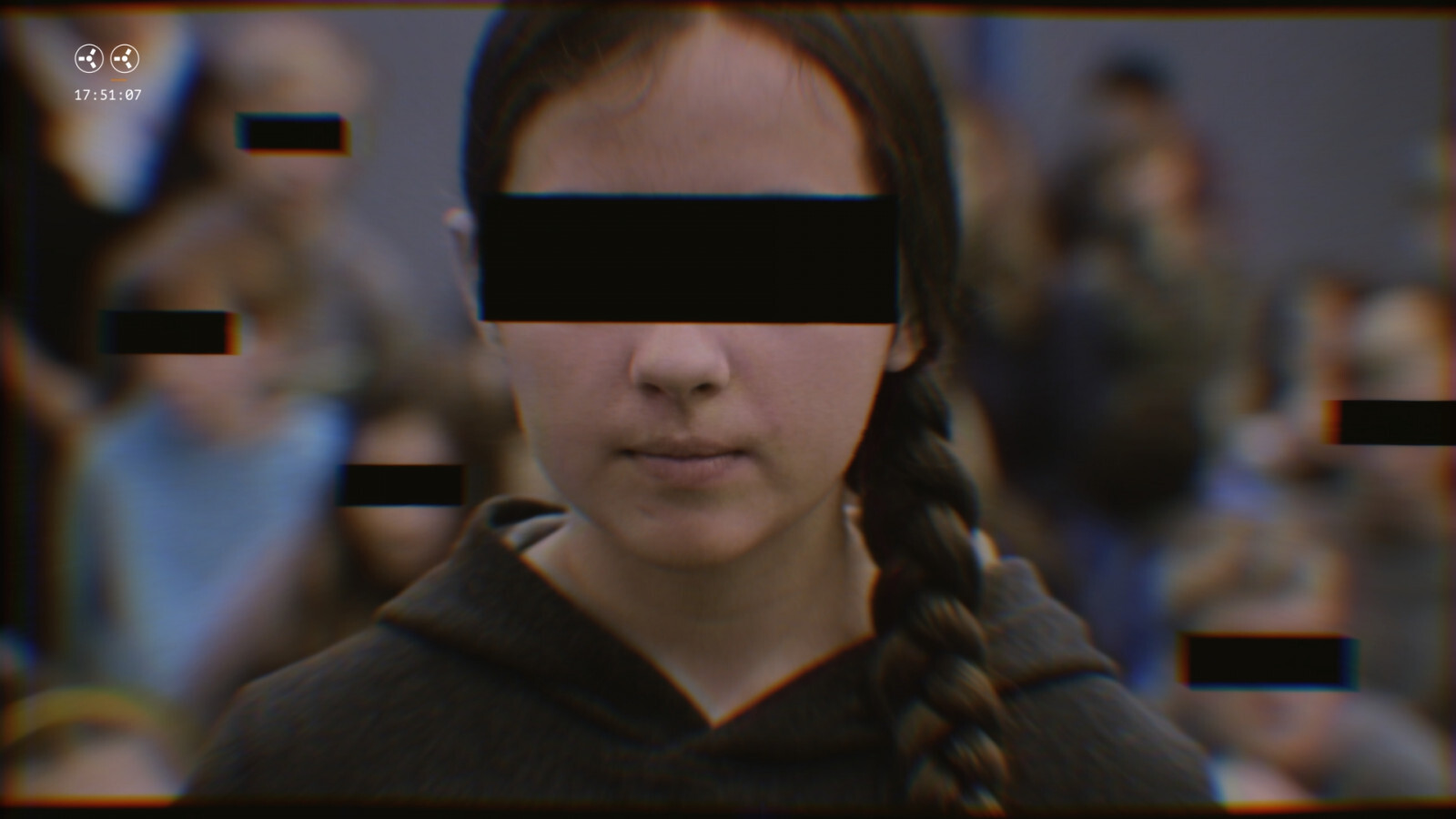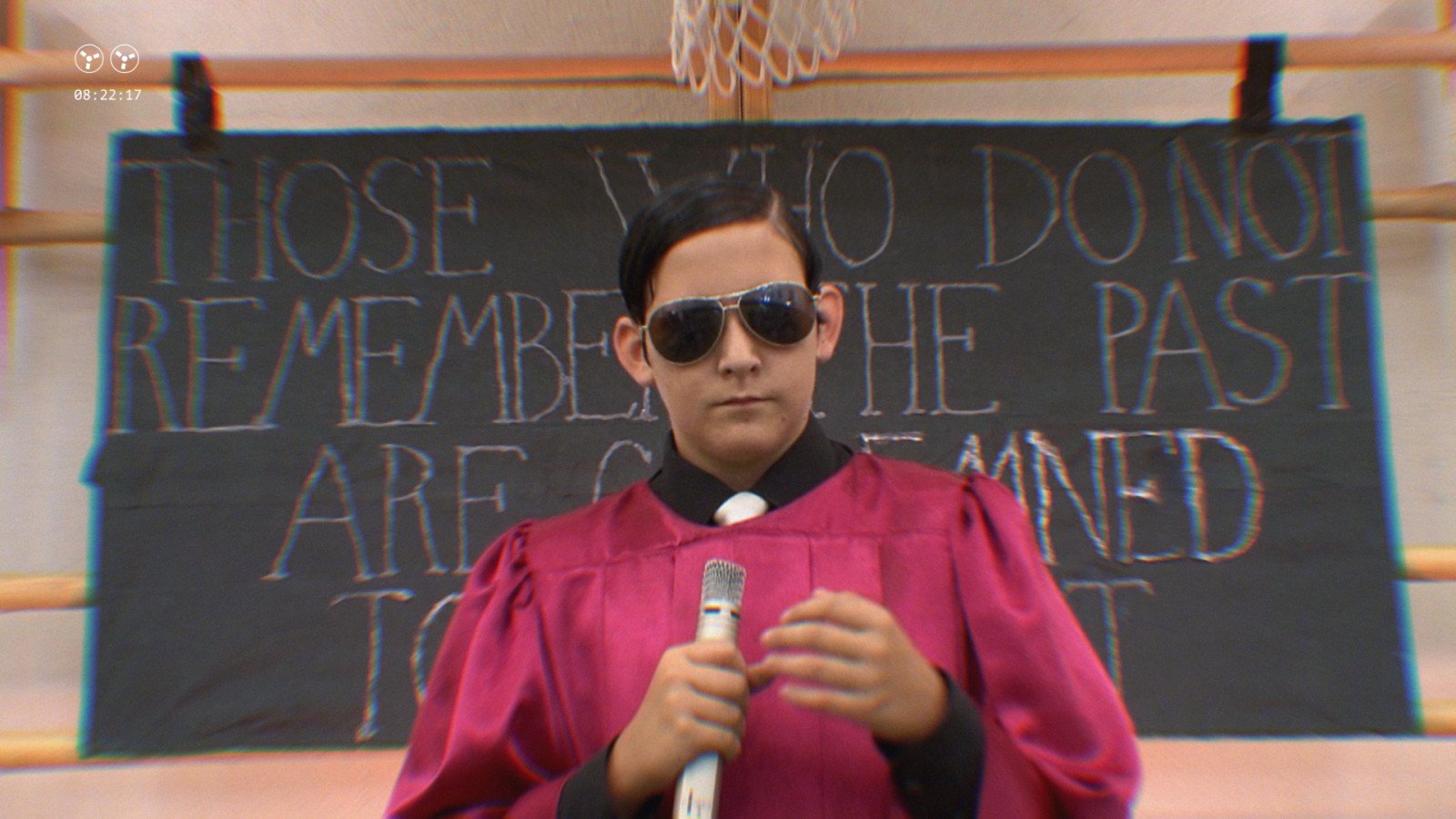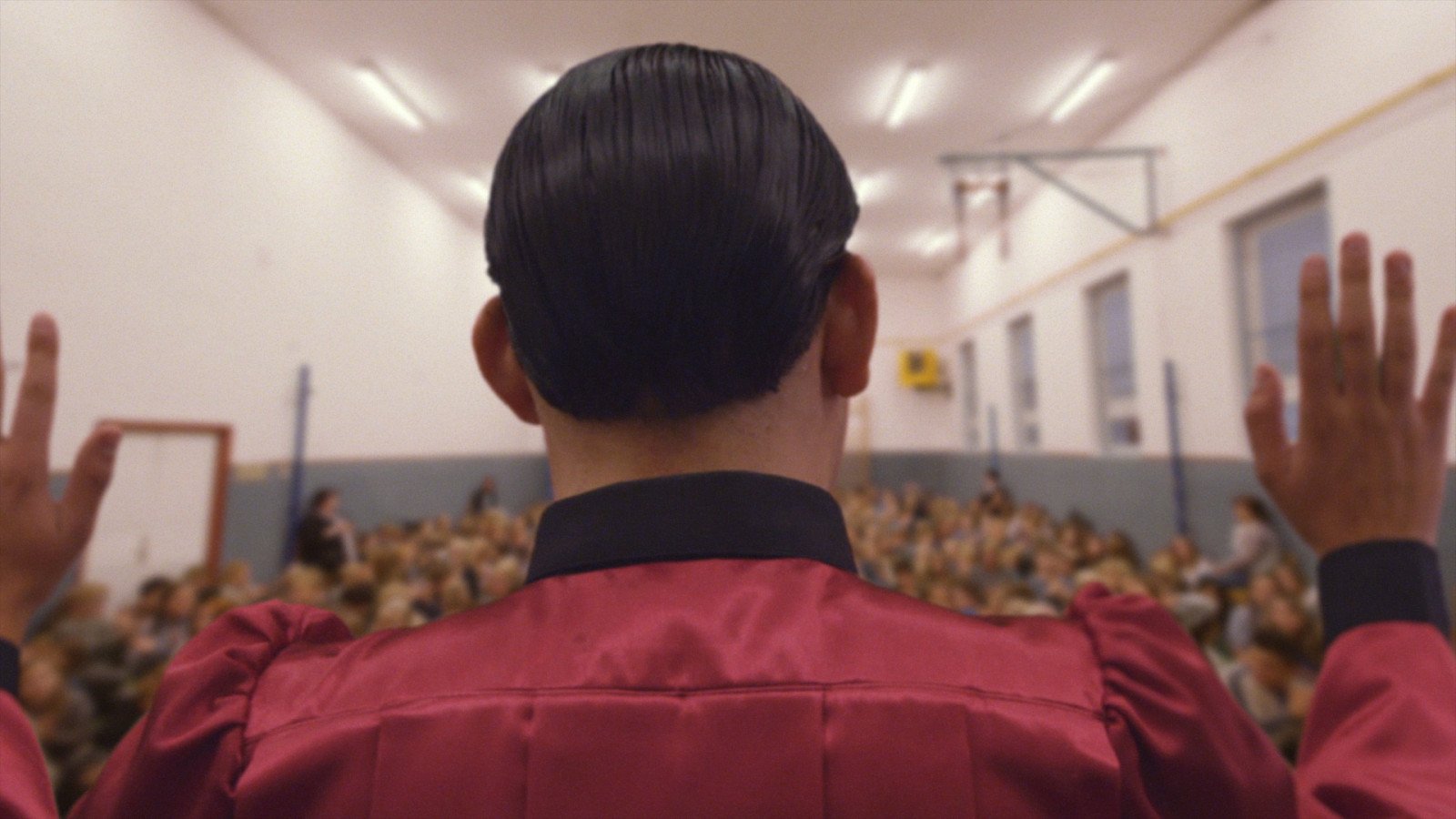How to deal with a massacre of a Jonestown calibre
Jan Buštas' film a-B-C-D-e-F-G-H-i-JONESTOWN, awarded the Best Film Editing prize, is not easy to watch till the end. How does it work with alienation techniques and where can we find absurd humour in dramatisation of a mass tragedy?
In the middle of the black screen, we can see a small white point, zooming in to the accompaniment of a threatening whizz of a propeller. Viewers see an aerial photo of Jonestown reservation showing a building surrounded by hundreds of dead human bodies. Context of the well-known mass suicide of more than nine hundred people (considerable number of them were children), who were induced to commit it by fanatical preacher Jim Jones, is explained in English by a deep thick voice which seems to come from a conspiracy video.
The sensationalist communication mode is soon disturbed by babbling child's voice, translating the English commentary into Czech. By the end of the short prologue, it becomes evident that the focus of the film does not align with the facts of the tragedy; rather, it explores the manner in which these facts are presented. “Do you want to see a terrifying story about a sect?”, a child interpreter asks the viewers and confronts them with their sensationalism. “You won't see it!”, says a title written in orange capital letters across the whole screen.
Out of a clear classification
The author of experimental film a-B-C-D-e-F-G-H-i-JONESTOWN (2022) is Jan Bušta, trailer editor, script writer and unconventional filmmaker. He made his debut 8 years ago with a one-hour-long film Televise bude! (TV Now!, 2014), an actors’ docu-drama as well as declared fiction about the first broadcasting day of Czech Television. For his second directorial act, his starting material is the so-called Death Tape – the last audio recording from Jonestown capturing Jones´s speech to his followers, in which he is explaining reasons why they will have to die (with their own hands). Its content, which is heard in the film in its full length of forty-three minutes, is symbolically overacted and dubbed into Czech in the form of a voice-over by a group of (child) actors and non-actors with Jakub Kanhäuser in the leading role of Jones.
Both Televise bude! and Jonestown show Bušta´s dismissive attitude to cinematography as a world of beautiful, convincing illusions. Instead of that, he brings a compilation of different sources, material as well as of ideas, and sails out from waters belonging to specifically actors´, documentary or generally genre films.
However, he naturally does not end up in a vacuum. Choice of the theme led him to the field of mass tragedy dramatisation which creates two difficulties. The resulting work of art may either approximate an exploitation communicating the trauma through an emotional and attractive story (it is often talked about Schindler's List /1993, Steven Spielberg/ in this context) or it may suppress the storytelling tendency to mediate the dreadful experience to the viewers (subjectively made film Utoya: July 22 /2018, Erik Poppe/). However, if we take the frightfulness of such an experience into consideration, it is hard to imagine its realistic artistic portrayal – every attempt of this kind becomes a kind of attraction when watched in the safety of a cinema screening room.
Breakup with film realism
Bušta avoided both difficulties by choosing an ethically less problematic way which leads in the opposite direction – to a complete alienation from the chosen topic and a breakup with conventions of film realism. He decided to choose children as actors for all the sect members (except for infants who are replaced by plastic dolls), the whole Jonestown settlement is replaced with a single gymnasium and its real contours are blurred by cameraman and editor. In Bušta’s film, Jonestown is not a physical space, it is an abstract one; it is a phenomenon impossible to retrieve or go through from a distance. The aim of his film is not to overwhelm, entertain or inform the viewers in detail, even though it remains faithful to reality through the verbatim quotation of the Death Tape. He intends to show how the meaning of each image or word forms the way of its presentation.
At the very beginning of the film, Bušta renounces his position of a dogmatic propagandist of the only truth by presenting a dual interpretation of the Jonestown suicide by both American and Russian Secret Services. His method does not lead to absolute knowledge, which is unachievable anyway, but slightly uncovers cracks in a seemingly compact image of reality. For instance, he draws viewers’ attention, by using subtitles, to imperceivable moments during which the process of recording the Death Tape was interrupted. Bušta does not take any explicit stand on the event or the despicable acts of the insane preacher and does not untangle the net of historical consequences and conspiracies weaved around the sect. He tests the power of raw film images by evoking sharp mood changes in the viewers.
Bušta causes the first wave of surprise at the very beginning. After a several minute-long information intro consisting of authentic photographs of Jonestown and its victims, he continues with shots of his own daughter chasing a cat around a flat. The film, so far giving an impression of an unconventional yet still “serious” documentary, uncovers its experimental character and arouses laughter due to the bizarre incorporation of these quasi-amateur shots reminding us of a home video made on a mobile phone. Is the laughter inappropriate in the context of such a serious theme? Not at all. By a free examination of different attitudes of mood, the author achieves a less directive result than most of his colleagues, who scrupulously try not to profane a sensitive topic and thus yield to seductiveness of pathos (see the above mentioned films). Plurality of sources, which the film works on and emotions which it arouses, make Bušta´s Jonestown a work which is rich and open but also not easy to watch.
Stand it till the end
A dynamic, funny and bitter introduction is shortly replaced by a part of the film which forms its backbone and is much more demanding in terms of attention. We hear the compact Death Tape and Jones´s monotonous confused speech, which is visualised with the above described minimalism. “Time code” in the left upper corner is counting down the exact time of forty-three minutes and lets us know that there is no escape from the given course. Amusement is followed by anxiety and discomfort, intensified by black stripes which cover the eyes of all of the characters, and maybe boredom as well. It is right at that moment when Jonestown triumphs artistically – it makes the viewers ask for possibilities of how to work with the chosen theme, take notice of the way formal elements are used and ideally also overcome a feeling of aversion and stand watching the film till the end. For those who manage it, a cathartic ending is prepared. Detailed claustrophobic shots from the gymnasium are replaced by everyday scenes from the streets of Prague, saturated with colours.
In the end of the film, Bušta returns power, earlier deprived by alienation techniques, to the film image. However, he does not give up his scepticism or sense of absurd humour. Jones himself guides us through this relieving sequence, intensified by gradually rising spiritual music, and distributes “redemption” in the form of sweets to the passers-by. Before the film ends, its authors come down to Earth once again. Instead of using closing credits they return to the real world unmitigatedly and then say goodbye by removing all meanings from the screen. A soothing rustle is heard and the attained whiteness of the screen brightens up the cinema auditorium, letting the viewers deal with what they have just seen. However, the end should not cover the biggest asset of the film. Jan Bušta managed to defeat gratefully manipulative films with their own weapon – a carpet bombing of manipulation.




